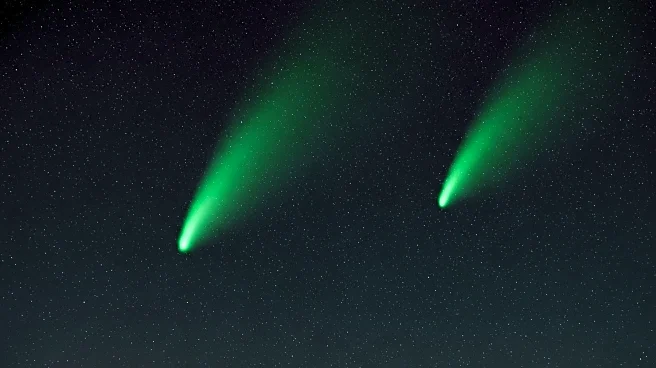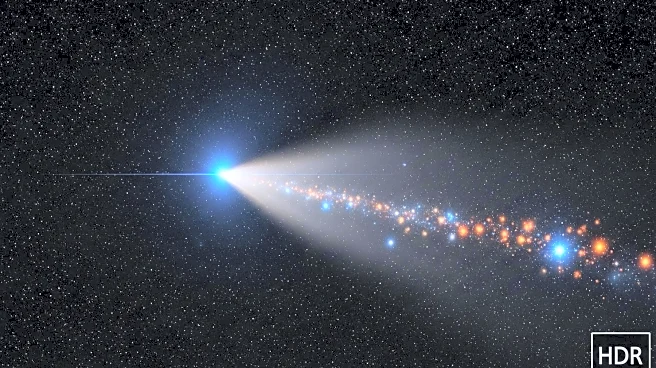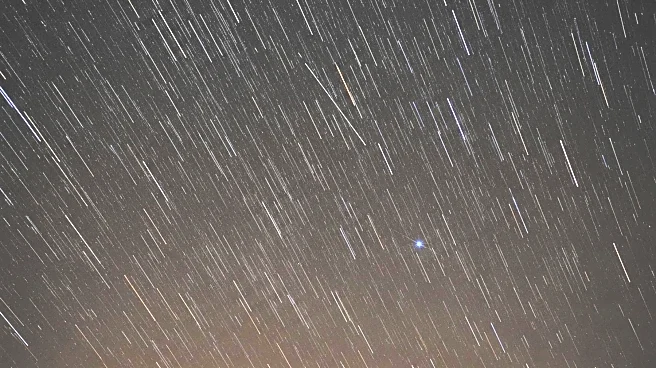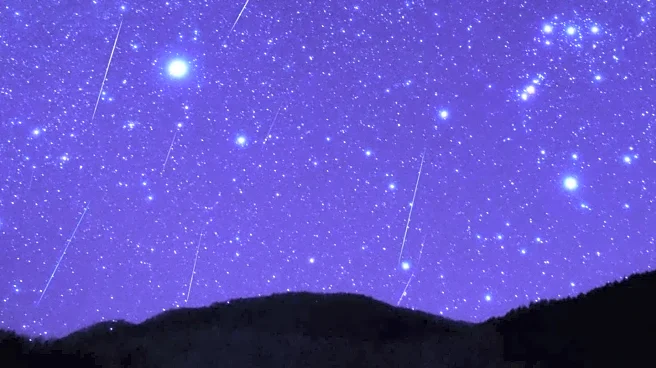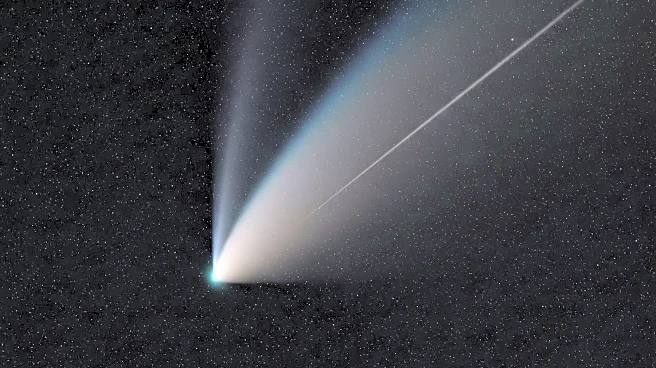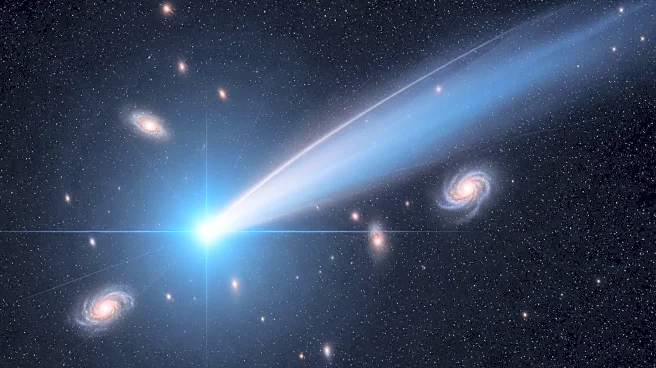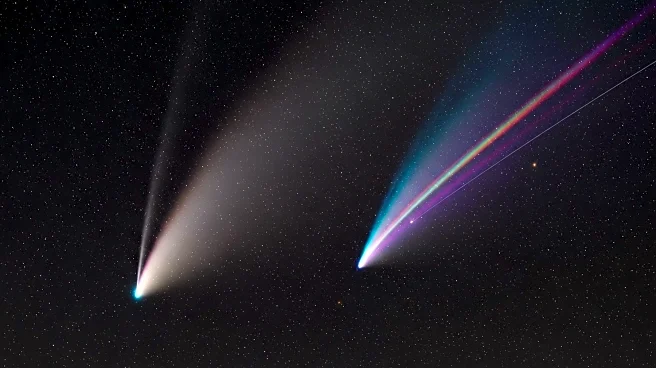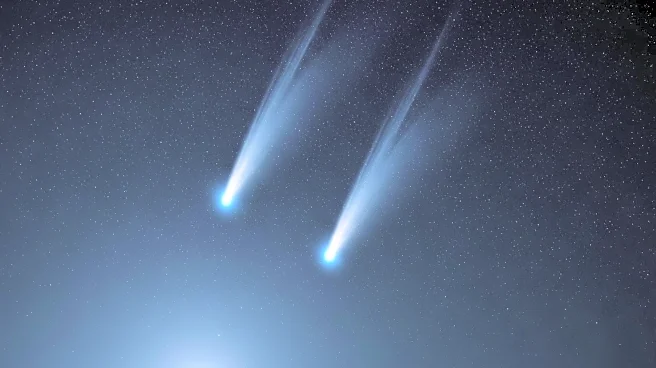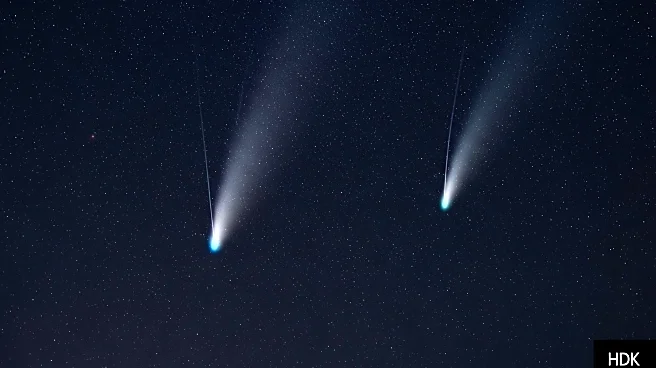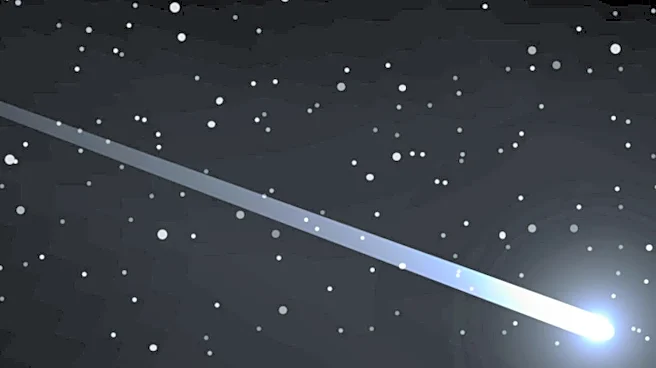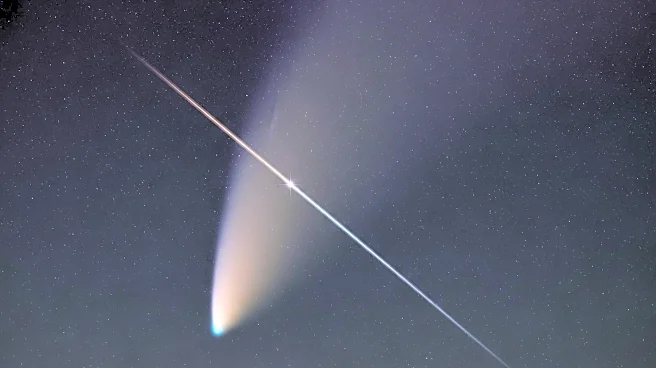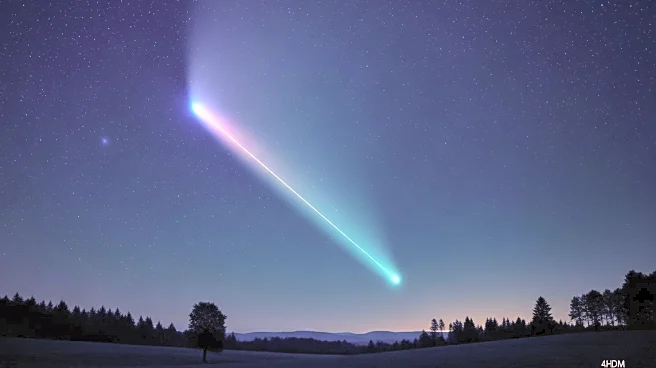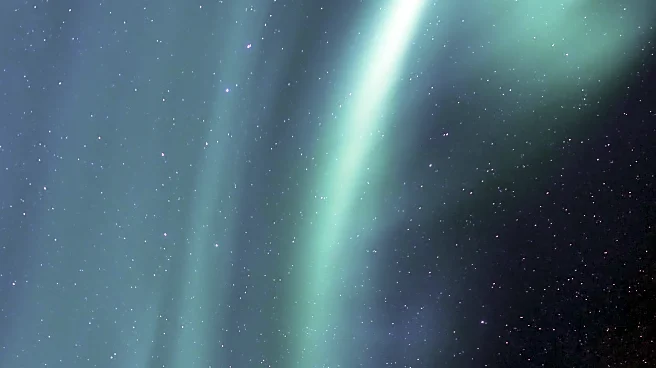What is the story about?
What's Happening?
Two comets, C/2025 A6 (Lemmon) and C/2025 R2 (SWAN), are currently visible from the Northern Hemisphere as they pass through the inner solar system. These comets offer a rare opportunity for skywatchers to observe them with binoculars or small telescopes throughout October. Comet Lemmon may be visible to the naked eye when it reaches its closest point to Earth around October 21, while Comet SWAN can be viewed in the evening sky, best seen 90 minutes after sunset facing southwest. The presence of carbon in the comets' gas clouds gives them a faint green hue.
Why It's Important?
The appearance of two comets in the same month is uncommon and provides a unique opportunity for astronomers and enthusiasts to study these celestial objects. Observing comets can offer insights into the composition and behavior of these icy bodies as they interact with the sun's energy. The visibility of Comet Lemmon and Comet SWAN may also inspire public interest in astronomy and skywatching, encouraging educational activities and community events centered around these cosmic phenomena.
What's Next?
As Comet Lemmon and Comet SWAN continue their journey through the solar system, astronomers will monitor their brightness and trajectory. The comets' closest approaches to Earth will provide optimal viewing conditions, and enthusiasts are encouraged to take advantage of clear skies and minimal light pollution to observe them. The study of these comets may contribute to ongoing research on cometary behavior and the solar system's dynamics.
Beyond the Headlines
The presence of these comets highlights the dynamic nature of the solar system and the ongoing exploration of celestial phenomena. The study of comets can offer valuable information about the early solar system and the materials that contributed to its formation. Additionally, the public's interest in observing these comets may foster a greater appreciation for astronomy and the scientific community's efforts to understand the universe.
AI Generated Content
Do you find this article useful?
